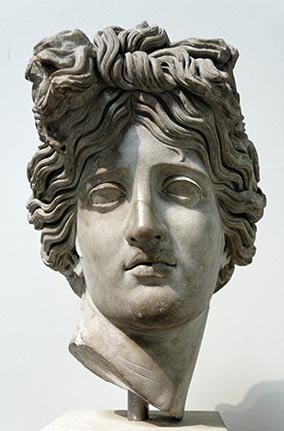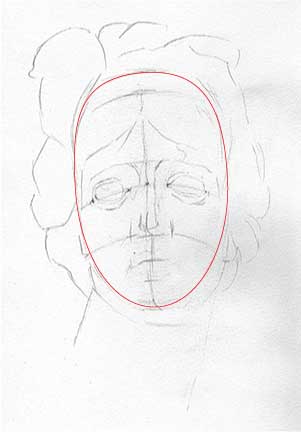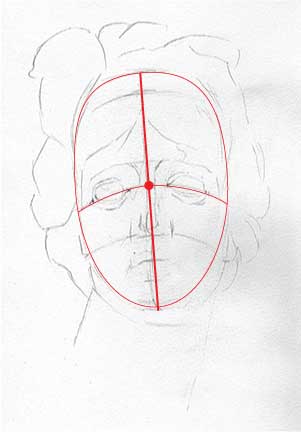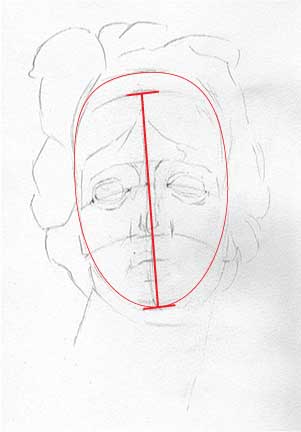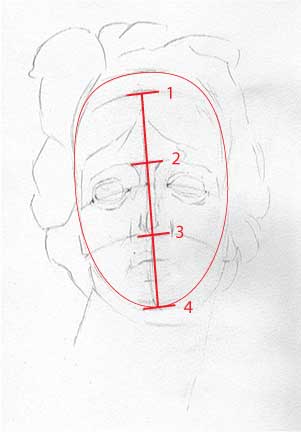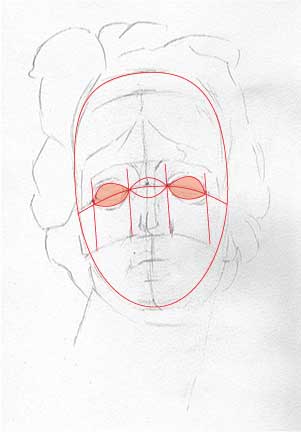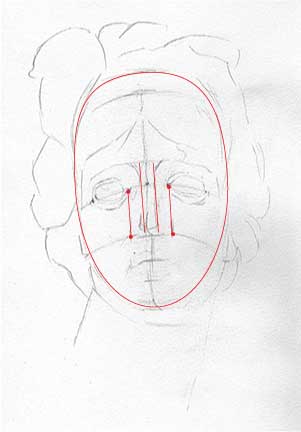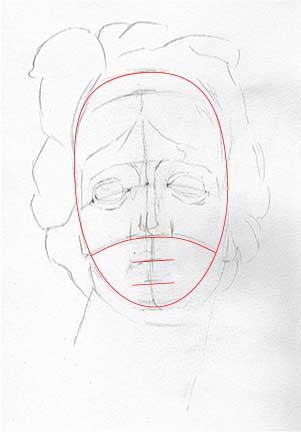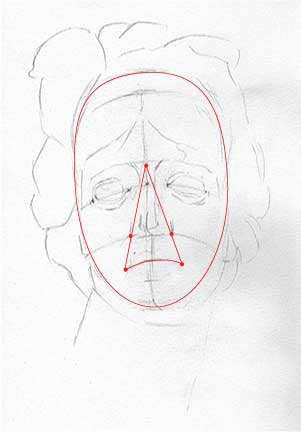
9. The ears fit precisely within the middle third of the face.

10. There are few areas in a face that are typically darker as they get less light:
1 & 2 – under the brows, especially in the corners
3 – under the nose
4 - Upper lip
5 – under the bottom lip
6 – under the chin
The rest of the values vary based on the light source.
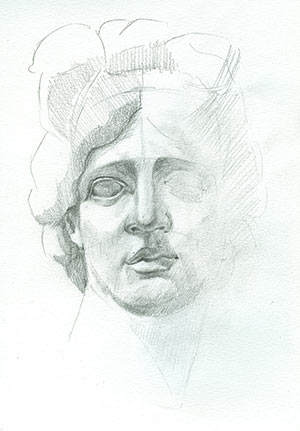
11. Start working on details now. Use your pencil as a measuring tool for correct proportions.
Draw facial features carefully - pay attention to the forms and shadings.

12. Use a variety of values. Note where the lightest areas are (highlights) - and leave then white. Note where the darkest shadows are.
The rest of the values - is a range of greys.
Remember:
Face is divided into three equal parts: hairline to eyebrows, eyebrows to the bottom of the nose, bottom of the nose to the bottom of the chin.
The eyes are halfway between the top of the head and the chin.
The bottom of the nose is halfway between the eyes and the chin.
The mouth is one third of the distance between the nose and the chin.
The distance between the eyes is equal to the width of one eye.
The corners of the mouth line up with the centers of the eyes.
The top of ears line up slightly above the eyes, in line with the outer tips of the eyebrows.
The bottom of the ears line up with the bottom of the nose.
The width of the shoulders is equal to two head lengths
...


